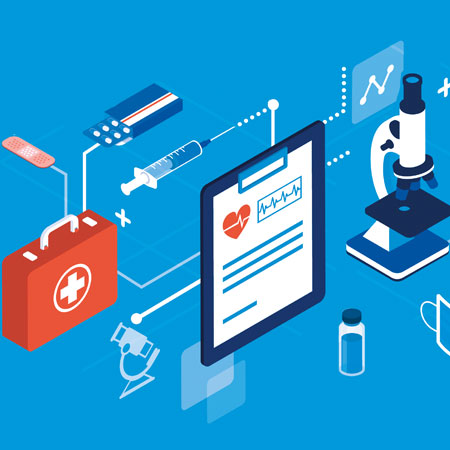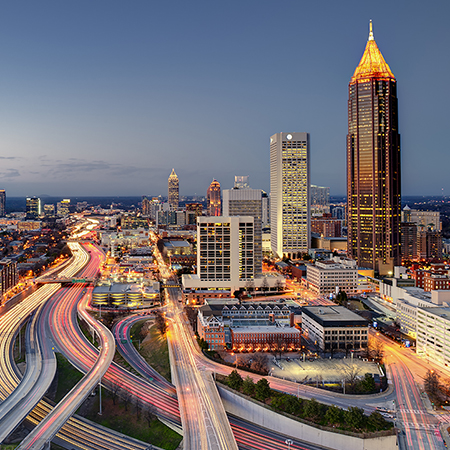The Cities Where Life Sciences Are Taking Hold
A particular focus on science and pharma throughout the pandemic has seen new locations emerge as life science hubs. But which cities are seeing this growth, and why?
Innovation in healthcare, coupled with an increased focus on wellbeing following Covid-19, has brought life sciences to the forefront of people’s lives. This has heightened the investment appeal of major life sciences centres – Boston and San Francisco in the US, Oxford and Cambridge in the UK. However, rising demand is also seeing capital flow to a tier of locations emerging beyond the established markets.
Emerging locations
One key driver of life sciences is venture capital investment. Figures for 2020 reveal interest globally with strong capital flows into China, as well as parts of the US and Europe.
The Chinese city of Wuxi takes the top spot for growth, seeing investment of $341 million – seven times more venture capital investment than 2019. However, it is the more established Chinese tech location of Shenzhen that saw the highest volume. Off an already strong base, it attracted $1.4 billion of investment in 2020, four times the level of 2019.
Growth in China is partly driven by the opportunity for international companies in a huge market. When it comes to human health, the development of life sciences will also be spurred on by the different human physiology between global regions, therefore creating the need for more ‘local’ R&D and clinical trials.
Two markets converging
Another trend seen through the venture capital figures is the tech and life sciences crossover cities. Austin in Texas received $212 million of investment in 2020 across eight deals, an increase of nearly 220%. The city has more than 20 colleges and universities that provide life sciences-related and healthcare education, such as the University of Texas at Austin. Austin is a top ranked tech location in Savills Tech Cities research. This intersection with tech has already seen 240 life sciences companies set up in the region, with a workforce of nearly 15,000.
European centres
While the UK has led in globally recognised life-science locations in Europe, there are also hubs gaining ground on the continent, such as Barcelona, Spain; Zug, Switzerland and Leiden in the Netherlands.
Zug, long associated with life sciences as the country HQ of Roche and Johnson & Johnson, saw a nearly 350% increase in venture capital investment in 2020, with $341 million from five deals. Leiden, with the largest life sciences and health cluster in the Netherlands, received nearly $90 million in capital in 2020 from six deals, a funding increase of 162%.
Wuxi: a new Chinese hub
International interest in the Chinese life sciences market has homed in on the mid-sized city of Wuxi (population 6.5 million). In 2020, AstraZeneca, the British/Swedish multinational, joined forces with the Wuxi government and the Wuxi Hi-tech Zone to open the Wuxi International Life Science Innovation Campus. This 300,000 sq m space is dedicated to pharma and medical device research and development, with the aim to be the preferred choice for domestic and overseas life science companies to flourish in China. Wuxi’s location west of more-expensive cities Shanghai and Suzhou – both established life sciences cities – is part of the appeal, extending a life sciences corridor.
The success of Stevenage
Stevenage might appear to be an unassuming town north of London, UK, but it is the third-largest cell and gene therapy cluster in the world. In 2020, the town saw a 184% increase in funding to $193 million spread across six deals. Already home to pharmaceutical giant GSK, its life science credentials grew when it joined the Catapult Network, a group of nine leading technology and innovation centres across 40 locations in the UK. “Helped by government funding, the Catapult has encouraged companies to grow and to relocate in Stevenage, forming a specialist cell and gene therapy cluster,” says Tom Mellows, Director, Office & Life Science Leasing & Development, Savills UK. This cluster is centred on the Stevenage Bioscience Catalyst campus, developed by GSK, Wellcome and the UK Government.
Lifestyle and science in Barcelona
With venture capitalists such as Ysios Capital and Alta Life Sciences backing some successful companies in Barcelona in recent years, it has helped bring maturity to a market with a strong start-up culture. “Before, there was some transfer [of ideas] from the university into companies, and they were bought at the very early stage for very little money,” says Montse Barceló Riera, Vice President Europe at global research company Veristat. Now, instead of those ideas being exported, growing companies are recruiting internationally, with Barcelona becoming a burgeoning ecosystem, spurred on by the quality of life offered by the Catalonian city. It has also found its niche, preferring to not compete with big pharma but instead to innovate in areas such as digital health and medical devices. “We are entrepreneurs and we have very good hospitals, so let’s keep that science and reinvent it,” says Barceló Riera.



